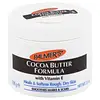What's inside
What's inside
 Key Ingredients
Key Ingredients

 Benefits
Benefits

 Concerns
Concerns

 Ingredients Side-by-side
Ingredients Side-by-side

Water
Skin ConditioningHomosalate
Skin ConditioningGlycerin
HumectantAlcohol Denat. 6.45%
AntimicrobialButyl Methoxydibenzoylmethane
UV AbsorberBis-Ethylhexyloxyphenol Methoxyphenyl Triazine
Skin ConditioningEthylhexyl Salicylate
UV AbsorberDibutyl Adipate
EmollientEthylhexyl Triazone
UV AbsorberCopernicia Cerifera Cera
EmollientPanthenol
Skin ConditioningVp/Hexadecene Copolymer
Tocopheryl Acetate
AntioxidantMicrocrystalline Cellulose
AbsorbentSucrose Polystearate
EmollientCellulose Gum
Emulsion StabilisingButylene Glycol Dicaprylate/Dicaprate
EmollientTetrasodium Iminodisuccinate
Phenylbenzimidazole Sulfonic Acid
UV AbsorberHydrogenated Polyisobutene
EmollientPolyglyceryl-4 Diisostearate/Polyhydroxystearate/Sebacate
EmulsifyingSodium Stearoyl Glutamate
CleansingAcrylates/C10-30 Alkyl Acrylate Crosspolymer
Emulsion StabilisingPantolactone
HumectantXanthan Gum
EmulsifyingTrisodium EDTA
Phenoxyethanol
PreservativeEthylhexylglycerin
Skin ConditioningSodium Hydroxide
BufferingCitric Acid
BufferingSodium Chloride
MaskingLinalool
PerfumingLimonene
PerfumingBenzyl Alcohol
PerfumingAlpha-Isomethyl Ionone
PerfumingCitronellol
PerfumingGeraniol
PerfumingParfum
MaskingWater, Homosalate, Glycerin, Alcohol Denat. 6.45%, Butyl Methoxydibenzoylmethane, Bis-Ethylhexyloxyphenol Methoxyphenyl Triazine, Ethylhexyl Salicylate, Dibutyl Adipate, Ethylhexyl Triazone, Copernicia Cerifera Cera, Panthenol, Vp/Hexadecene Copolymer, Tocopheryl Acetate, Microcrystalline Cellulose, Sucrose Polystearate, Cellulose Gum, Butylene Glycol Dicaprylate/Dicaprate, Tetrasodium Iminodisuccinate, Phenylbenzimidazole Sulfonic Acid, Hydrogenated Polyisobutene, Polyglyceryl-4 Diisostearate/Polyhydroxystearate/Sebacate, Sodium Stearoyl Glutamate, Acrylates/C10-30 Alkyl Acrylate Crosspolymer, Pantolactone, Xanthan Gum, Trisodium EDTA, Phenoxyethanol, Ethylhexylglycerin, Sodium Hydroxide, Citric Acid, Sodium Chloride, Linalool, Limonene, Benzyl Alcohol, Alpha-Isomethyl Ionone, Citronellol, Geraniol, Parfum
 Reviews
Reviews

Ingredients Explained
These ingredients are found in both products.
Ingredients higher up in an ingredient list are typically present in a larger amount.
Parfum is a catch-all term for an ingredient or more that is used to give a scent to products.
Also called "fragrance", this ingredient can be a blend of hundreds of chemicals or plant oils. This means every product with "fragrance" or "parfum" in the ingredients list is a different mixture.
For instance, Habanolide is a proprietary trade name for a specific aroma chemical. When used as a fragrance ingredient in cosmetics, most aroma chemicals fall under the broad labeling category of “FRAGRANCE” or “PARFUM” according to EU and US regulations.
The term 'parfum' or 'fragrance' is not regulated in many countries. In many cases, it is up to the brand to define this term.
For instance, many brands choose to label themselves as "fragrance-free" because they are not using synthetic fragrances. However, their products may still contain ingredients such as essential oils that are considered a fragrance by INCI standards.
One example is Calendula flower extract. Calendula is an essential oil that still imparts a scent or 'fragrance'.
Depending on the blend, the ingredients in the mixture can cause allergies and sensitivities on the skin. Some ingredients that are known EU allergens include linalool and citronellol.
Parfum can also be used to mask or cover an unpleasant scent.
The bottom line is: not all fragrances/parfum/ingredients are created equally. If you are worried about fragrances, we recommend taking a closer look at an ingredient. And of course, we always recommend speaking with a professional.
Learn more about Parfum